Helping you restore life’s rhythm
Constipation can seriously disrupt daily life, creating discomfort, and holding you back from doing the things you love – even more so when it happens regularly.29,30
There are several ways to treat or prevent recurring constipation29,23 – read on to find out how to restore your life’s rhythm.
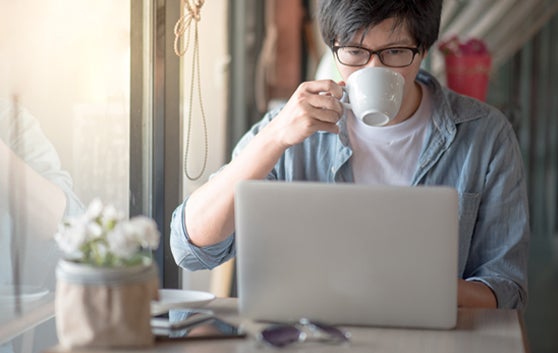
REOCCURRING CONSTIPATION CAN AFFECT YOUR DAILY LIFE
Constipation can significantly impact quality of life due to mental and physical stress30. It can also leave you feeling irritable, moody, worried, or embarrassed31,32 – feelings that prevent you from doing the things you love.
Did you know that around 40% of people affected by constipation suffer from reoccurring constipation that can last for several weeks or longer?33
THE GUT AND BRAIN CONNECTION
Recently, scientists have begun to think of the gut as a second brain32 – its function is no longer limited to simply processing the food we eat.32 Some of their findings have revealed that:
A big part of our emotions is influenced by the nerves in our gut.32 Signals of the gut can reach different parts of the brain34 – the gut actually has a large system of nerves which makes it the body’s largest sensory organ.32 A gut that doesn’t feel good can affect our mood and health.32,35
Because the brain and the gastrointestinal system are intimately connected, the brain has a direct effect on our stomachs, ultimately linking constipation to stress.35
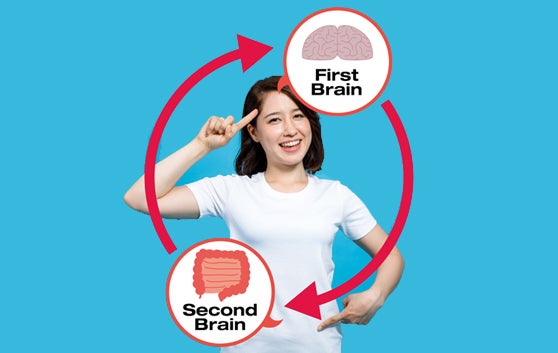
RESTORING LIFE’S RHYTHM
There are a number of ways to break the cycle of recurring constipation – such as a healthy diet, good toilet habits,29 the right treatment such as lactulose,4 and regular exercise.29 In fact, light exercise like yoga can help improve your bowel habits.36 Science has proven that yoga is a great way to support digestive health by relaxing the mind and body and increasing blood flow to the gut.36 One of the well-known benefits of yoga is reducing stress,36 which contributes to constipation. Experts from the Yoga Institute have develop a yoga routine to help you manage constipation.36 These are simple poses that you can easily integrate into your daily life – either alone or with your loved ones – to kick-start healthy living habits and restore your digestive health.
Adamant Pose
Starting Position
- Assume a kneeling position on a mat with your knees touching each other. Let your toes touch each other and the heels remain apart.
Steps
- Lower your body and sit comfortably on the hollow formed by your toes and heels. If you are a beginner use your hands to lower yourself down. You may use a soft mat initially.
- Hold your body erect and your head, neck and body in a natural line, the abdomen held in normal contour.
- Place your hands upon your knees with your palms facing downwards.
- Close your eyes and passively observe your breath of keep your gaze fixed at one point. Sit for around 5 to 10 minutes.
- Slowly open your eyes and gently assume the starting position, unwind your legs and gently stretch your legs forward as in a sitting position.
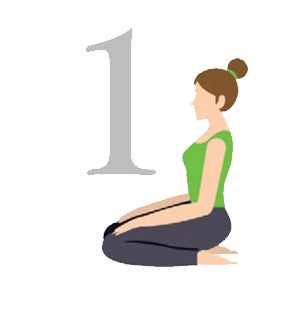
Cobra Pose
Starting Position
- Lie down on your stomach on a mat with your hands at the sides of your body.
Steps
- Bending at the elbows, place your palms facing down near your chest, keeping your elbows close to your body.
- While inhaling, raise your head and neck upwards to look up towards the celling. Raise your upper body only until the navel and not more. Make sure that your feet remain together and not get separated.
- Remain in the final position holding your breath for six seconds.
Posture Release
- While exhaling, bring your head, neck and torso down to rest on the mat.

Plough Pose
Starting Position
- Lie on your back on a mat with both your legs together and hands at the sides.
Steps
- While inhaling, raise both your legs together forming a right angle to the body. (You may bend the knees before your raise your legs in case it is difficult for you to raise them up straight and use your hands for support.)
- While exhaling, lower your legs towards and beyond your head in a semi-circular arc to touch the toes to the floor.
- The hands remain in the starting position (However, you may use your hands if need to be, to support the hips as you raise yourself up and once the legs are in place bring your hands down to the starting position.)
- The legs remain straight.
- You may clasp your hands in the final position.
- Maintain the final posture, suspending your breath for six second.
Posture Release
Inhale, 3 seconds lift the legs up and lower your hips (With the aid of your hands if required and bending the knees) and then bring back your legs gently to the starting supine position.

Wind – Relieving Pose
Starting Position
- Lie supine at full length on a mat, feet together and hands resting beside the body.
- Mind is calm and body relaxed. Inhale normally.
Steps
- Exhale and bend the right leg at the knees and draw it towards the abdomen.
- Clasp the knee (or the shin) with both the hands and pull the knee up to the chest.
- Wrap the forearms just below the knee (the fingers clasping the opposite elbows), and keep it firmly pressed against the chest. Complete the above steps in 3 seconds, while exhaling.
- Ensure to rest the head and neck on the floor.
- Try to maintain the left leg straight.
- Maintain this pose for 6 seconds, retain breathe (final position).
- Returning to starting position: Inhale, in 3 seconds, gently release the clasped hands and slowly straighten the leg to bring it back to the starting position.
- Without pausing, repeat the above steps with the left leg to complete 1 round.
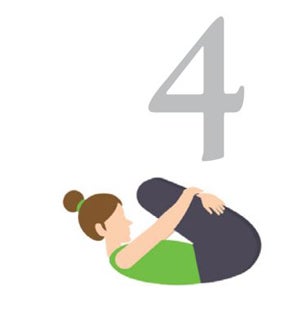
Forward Bending Pose
Starting Position
- Sit on a mat with legs fully stretched and toes facing upwards. Keep the spine erect, shoulders and neck firm in its place. Hands besides the body, palms facing down.
Steps
- Raise both arms beside the chest, folded at the elbows, parallel to the ground, palms facing down. Inhale normally.
- Exhale, bend forward and simultaneously arching the spine, the abdomen is drawn in, stretch the hands to hold the big toe.
- Gently pull the elbows down to touch the ground and bend the head to bring thr forehead to the knees.
- Rest the forehand in the space between the knees and maintain this posture, breathe normally (final position).
- Return to starting position: Raise the head and let off the toes, gently straighten the back and bring both hands to the sides.
- Recommended practice: Practice once-maintain the final position for 30 seconds, gradually taking it up to 1/2 miniutes with regular practice. Breathing should be normal-slow and rhythmic.
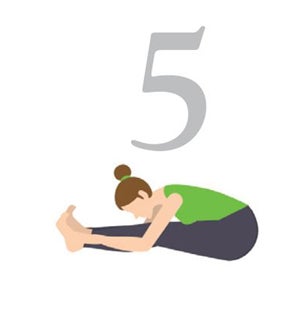
The Bow Pose
Starting Position
- Lie on the stomach (prone position), on a mat, legs drawn straight and feet together-toes pointing outwards. Slowly, raise the head and the neck a few inches and simultaneously bend the legs at the knees. Grasp the ankles of the legs with the respective hands.
Steps
- Inhale, in 3 seconds, raise the head upwards, arching the spine.
- Simultaneously, pul the legs also upwards to give the body a bow shape.
- Maintain this pose foe 6 seconds, retain breathe (final position).
- Revert to starting position: Exhale, in 3 seconds, bring the head down and simultaneously, release the ankles and unfold the legs, to assume the starting position. Care needs to be exercised when relieving the spinal pressure be stages. The coccygeal and sacral curves are relieved first follow by slow lowering of the trunk then gradually the upper portions, i.e., the lumbar, thoracic and cervical curves are completely relieved by stages.
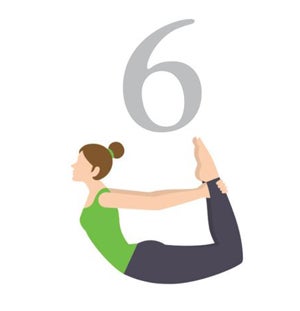
LONG-LASTING RELIEF FROM CONSTIPATION
Sometimes you might need a little extra help beyond diet and exercise. Finding the right treatment to break the cycle can be key. Not all laxatives work the same way. Some treatments work extremely fast, but constipation keeps coming back. Lactulose is a well tolerated, effective, easy-to-take solution, that frees people from the ongoing up and down challenges of constipation.23,38,39 Lactulose breaks the cycle of recurring constipation in two ways – it treats immediate symptoms and has prebiotic properties to encourage growth of health-promoting bacteria, such as Bifidobacterium and Lactobacillus, which contribute to long term bowel regulation.23,28
Thanks to its dual action, lactulose does not just treat symptoms – it also provides a long-term treatment approach for constipation23,39 to Restore Life’s Rhythm.
IN COLLABORATION WITH THE YOGA INSTITUTE
The Yoga Institute is a government recognized non-profit organization, known as the oldest organized yoga center in the world. It was founded in 1918 by Shri Yogendra, who was one of the important figures in the modern revival of yoga. It is headquartered at Santacruz in Mumbai, India.












